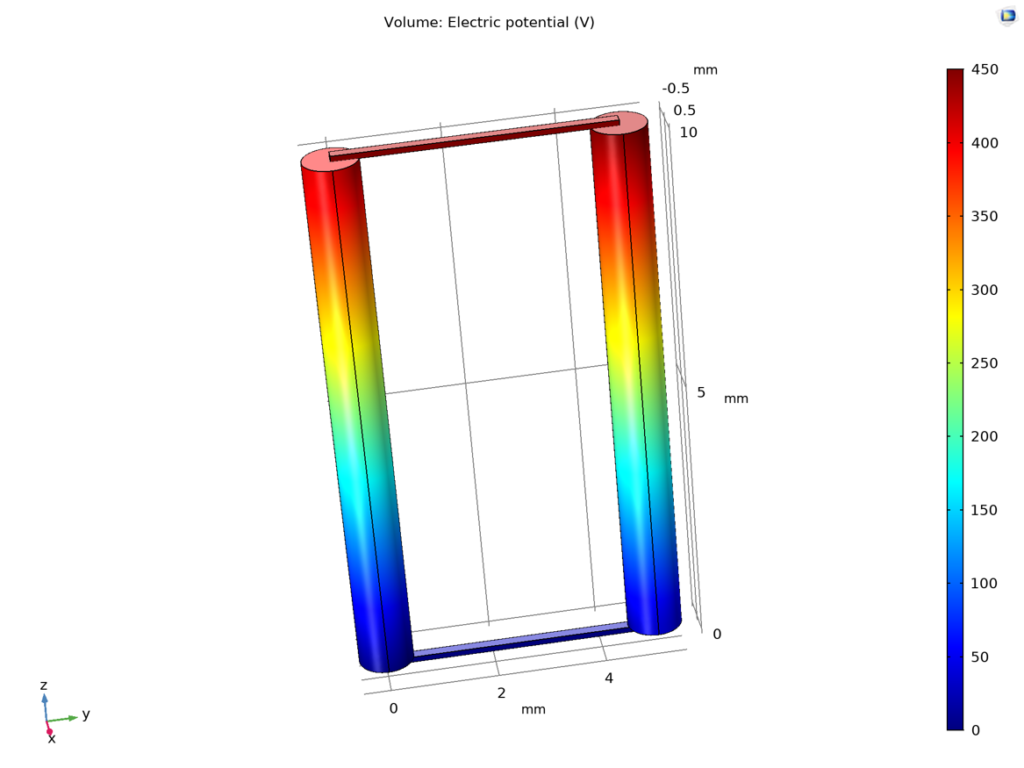Electrochemical impedance spectroscopy (EIS) is a potent method for studying the electrochemical characteristics of a broad variety of materials, including metals, polymers, and biological substances. EIS examines the electrical response of a material to a sinusoidal voltage signal delivered across a frequency range of generally 0.01 Hz to 1 MHz. The resultant impedance spectra may give useful insight into the physical and chemical processes happening at the material-electrolyte contact. EIS simulation is important for predictions of the system.
subscribe us (its FREE) for updates for new articles 🙂
Introduction
Simulation is one technique for analysing EIS data. EIS simulation use mathematical models to estimate the impedance spectrum anticipated for a specific system under certain circumstances. Using simulation, one may investigate the impact of many experimental factors, such as electrode shape, material qualities, and electrolyte composition, on the impedance spectrum.
Interested to Learn Engineering modelling? Check our Courses?

In this article, we will examine the fundamentals of EIS modelling, including its mathematical models, software tools, and applications in materials science and electrochemistry.
Models in Mathematics for EIS Simulation
Simulations of EIS rely on mathematical models to predict the impedance spectrum of a particular system. The most commonly used model for EIS simulation is the equivalent circuit model (ECM). The ECM portrays the system's electrical behaviour as a network of resistors, capacitors, and inductors. Each component in the circuit reflects a distinct physical or chemical process happening at the contact between the substance and the electrolyte.
A single resistor and a single capacitor represent the solution resistance and double-layer capacitance, respectively, in the simplest ECM. This model is often used to evaluate the impedance spectra of basic electrochemical systems and is known as the Randles circuit. Complex systems, such as those involving redox reactions or charge transfer, need comparable circuits that are more sophisticated and have extra circuit parts.
Another approach to EIS simulation involves the use of numerical methods such as finite element analysis (FEA) or boundary element method (BEM). These techniques include solving the partial differential equations that regulate the behaviour of the investigated system. FEA and BEM are very helpful for modelling the behaviour of complicated geometries, such as porous electrodes and biological tissues.
Instruments for EIS Simulation
For EIS simulation, a variety of software tools are available, ranging from basic spreadsheet-based models to complex numerical simulation systems. Among the most often used software tools for EIS simulation are:
ZView: ZView is a commercially accessible EIS data analysis software programme. ZView contains a variety of analogous circuit models and offers tools for fitting the models to experimental data.
EC-Lab - EC-Lab is another commercially accessible EIS analysis software programme.EC-Lab is equipped with a variety of data analysis and modelling capabilities, as well as the capacity to interact with electrochemical instruments.
COMSOL Multiphysics: COMSOL Multiphysics is a general-purpose numerical simulation package that includes tools for electrochemical modelling. COMSOL can model an extensive array of electrochemical systems, including batteries, fuel cells, and electrochemical sensors.
Applications of EIS Simulation
In materials science and electrochemistry, EIS simulation can be used in a lot of different ways. Some of the most common ways that EIS simulation is used are as follows: EIS simulation can be used to study how metals and alloys corrode in different electrolytes.
Simulation can help us understand how corrosion works and how different experimental variables affect corrosion rates. EIS simulation can be used to model how batteries and other energy storage devices that use electrochemistry work. Simulation can be used to improve the performance of batteries, come up with new designs for batteries, and find out how the properties of electrodes and electrolytes affect battery performance.
Sensor development: EIS simulation can be used to design and improve electrochemical sensors for a wide range of uses, such as monitoring the environment, sensing biomedical information, and controlling industrial processes.
Biological systems: EIS simulation can be used to study the electrical properties of biological materials like cell membranes and tissues. Simulation can help us understand how the body works and can be used to make new technologies for diagnosing and treating health problems.
Overall, EIS simulation is a powerful way to study the electrochemical properties of materials and systems. EIS simulation can tell us a lot about the physical and chemical processes going on at the material-electrolyte interface by using mathematical models to predict the impedance spectra that would be expected for a given system under given conditions.
For help in modelling in any FEA, FDTD, DFT Simulation / Modelling work, you can contact us (bkcademy.in@gmail.com) or in any platform.
Interested to Learn Engineering modelling? Check our Courses?
u can follow us on social media
Share the resource
-.-.-.-.-.-.-.-.-.().-.-.-.-.-.-.-.-.-
© bkacademy
